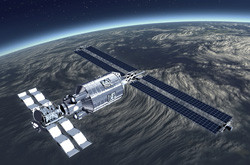Improved satellite communication solutions
The latest estimates suggest that there are more than 1 000 operational satellites orbiting our planet. Numbers will continue to rise as satellites play an increasingly important role in modern telecommunications and navigation systems, Earth observation and other non-military uses. On the other hand, much research work is devoted to reducing the size and cost of the next generation of smaller and smarter satellites. Modularity and tuneability of satellite microsystems would enable mass production of components together with significant decreases in cost. Such technology is possible with flexible radio frequency (RF) front ends developed by the EU-funded project SATURNE. The SATURNE scientists employed wide band gap (WBG) semiconductors to fabricate power electronic components smaller, more reliable and more efficient than their silicon-based counterparts. Specifically, they established processes to fabricate microelectromechanical system (MEMS) structures on three types of WBG substrates, including gallium nitride. Having characterised the resulting MEMS structures, the SATURNE researchers proceeded with the fabrication of RF-MEMS circuits and their integration with monolithic microwave integrated circuits on the same substrates. New intelligent microsystems (IMSs) emerged from the combination of the new components. The SATURNE team went beyond proving the feasibility of combining WBG materials- and RF-MEMS–based technologies in IMSs for transmitting and receiving ultra wideband systems. The inherent advantages of communication payloads accommodating multiple-frequency bands (narrow-, multi- or wide-band channel allocation) for transmission and reception were demonstrated with proofs-of-concept. SATURNE expects the flexible communications components will not only decrease the cost of individual satellites, but also enable more uses and services per satellite. Moreover, reducing dependence on key technology of foreign suppliers will ensure continued European progress unimpeded by external limitations.
Keywords
Satellite communication, signal frequencies, navigation systems, satellite microsystems, radio frequency, wide band gap, semiconductors, microelectromechanical system, intelligent microsystems, ultra wideband

